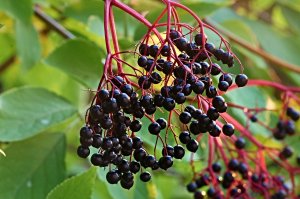
Gail Lee Martin’s book gets a mention now and then, which shows the staying power of old-fashioned ways from the Great Depression era. It seems that when times get hard, people look back to the 1930s for how families survived.
“Purchasing dye tablets, powders and craft paints can become expensive. Making your own with natural products can be a matter of using leftover juices from preparing foods, saving your household budget some money in the process, as detailed by the author of “My Flint Hills Childhood,” whose mother managed her home of five on a Great Depression budget.” (article on eHow called Natural Plant Dyes & Activities for Children By Holly Huntington)
Since it’s almost Easter time and people are still in the “stay home” mode, there’s likely to be an interest in coloring your eggs without store-bought dyes.

You won’t want to sacrifice eggs for some Easter fun with the current difficulty in getting those. I recommend blowing out the contents of the egg and saving those in the fridge for scrambled eggs or for baking. What you have left is a rather fragile eggshell that’s just waiting to be decorated.
Gail’s Memories of Easter in the 1930s
I remember as a child out in the Flint Hills of Kansas during the thirties we colored eggs for Easter. We had to think ahead to that special day because we didn’t have commercial egg coloring back then. My folks raised chickens and kept a few laying hens just for our own eggs. So we would save eggs for Mother to hard-boil and then we would color them in rainbow hues to be hidden on the prairie on Easter morning. Mother’s White Rock hens laid white eggs that were best for coloring.
Mother relied on Mother Nature a lot to obtain colors for our eggs by saving juice from cooked beets to make various shades of pink and red eggs. Yellow onion skins were steeped in hot water to produce a gorgeous yellow shade and the longer the egg remained in the colored water the darker it would get. Wild elderberries provided a juice that was a deep purple and a wet green leaf wrapped around an egg would leave a beautiful imprint on the egg. Mother used commercial blueing in her rinse water to whiten the laundry and we used some of it to make lovely blue-tinted eggs.
We also used wax from candles to make designs on the eggs before immersion in the liquid dye. I believe Mother also added vinegar to the natural juices but that might have been later when the little dye tablets came out in stores. We hid and hunted the eggs as a game, with no mention of the Easter Rabbit that is so talked about today. Anyone who has raised rabbits knows they don’t lay eggs of any type. To the children of mid-thirties, the art of coloring eggs was just another sign of Spring in our community.
We also just hid them one time and then made egg salad sandwiches, deviled eggs and put them into potato salad and had a picnic.
To hear this memory in Gail’s own voice, go to the story at Our Echo, then click on the audio link.

One Easter not too many years ago, with no children or grandchildren on the scene, I made some natural dyes and colored some eggs. I used beet water, onion skins and something else I can’t remember. They came out lovely.
Finding Eliza
LikeLike
Pingback: A Is For Ads | Discovering Mom
Just saw this. The colors you can get from natural dyes are fabulous. My sister-in-law and I colored eggs that way a few years ago. The eggs were like a rainbow of soft to deep colors
LikeLike
Thank you, Kathy, for taking the time to read and comment. As you go through this trying time in your life, I see that you haven’t lost your gift of words.
LikeLike